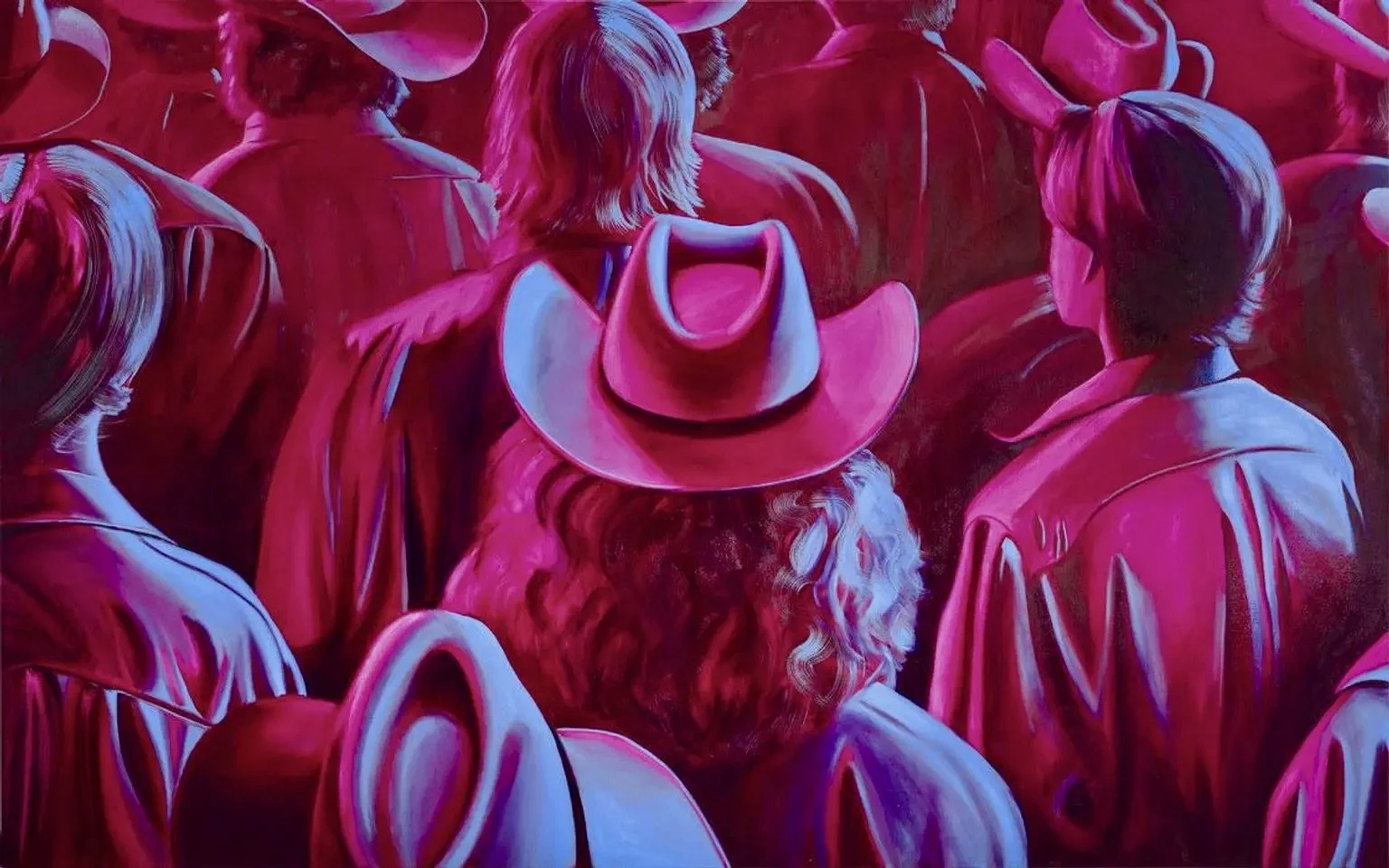Ana Segovia at MOCA
At MOCA Grand Avenue, Ana Segovia’s first solo museum exhibition in the United States opens like a VHS tape pulled from a shelf. One that never existed but should have. MOCA Focus: Ana Segovia rewrites memory, gender, desire, and cultural myth through a queer lens without asking for permission.
Paintings pulled from the imagined 1983 film I’ve Been Meaning to Tell You lean into cinema’s visual language. The references to Mexico’s Golden Age of film are deliberate. The framing is tight. The palette glows. Segovia doesn’t imitate. He rebuilds. Masculinity bends under the weight of performance. The charro figure, long used to define national pride, dissolves into color and movement.
The fictional film tells a queer love story. Buck is an artist. Mario works as a ranch hand. They meet in a Southwestern town built on fiction. There is no attempt at realism. The story exists as a correction. What’s missing from history is written in. The absence becomes a guide.
Segovia uses choreography to structure the exhibition. Visitors don’t pass through; they move with intention. Polyptychs stretch across the walls, and large-scale scenes break across panels. The paintings can’t be seen all at once. Placement blocks a full view. The audience circles, steps back, and shifts perspective. Access is partial by design.
Each visitor receives a random piece of the script. There is no beginning or end. No right way in. The decision resists the uniform consumption that galleries often promote. Viewers carry fragments. Meaning is built collectively, out of order. It echoes how queer memory passes along. Sometimes spoken. Sometimes not.
The aesthetic is camp, but not for decoration. It masks critique with humor and seduction. Neon pulls the viewer in. Staging keeps them off balance. Segovia references Susan Sontag but rejects the idea that camp is apolitical. Here, it’s used to break down constructed ideals. It distracts, then reframes. Gender becomes costume. The familiar becomes strange.
The paintings flicker like paused film stills. Subjects move. Dance. Pose. Each piece interrupts the last. The mural at the end doesn’t offer closure. It expands the motion. Segovia has said eight is the number of dance. The layout follows that idea. The exhibit becomes a loop.
The fictional film is not nostalgia. It’s an intervention. Queer life is written into the past. What was once implied becomes direct. The tone stays soft. The message does not.
Segovia’s history with macho archetypes is part of the work. He has spoken about embodying toxic masculinity while trying to understand his gender. The paintings reject that performance by exaggerating it. The charro figure returns with fringe, sequins, and vulnerability. Camp doesn’t dilute. It reroutes.
Corporate backing is present. Private donors fund the show. But the work resists being flattened by it. Segovia’s recent collaboration with Jose Cuervo mirrors this. He designed packaging in queer-coded colors. It ships worldwide. The politics remain. Camp enters the commercial space, but with intention.
MOCA Focus: Ana Segovia doesn’t tidy up. The narrative never resolves. Paintings refuse a full reveal. Viewers are drawn in, then left reaching. That tension matters. It’s part of the design. Queerness isn’t presented as spectacle. It arrives as form, rhythm, gesture, and refusal. What’s withheld speaks louder than what’s said.


